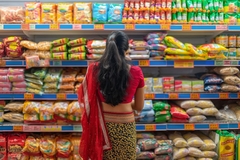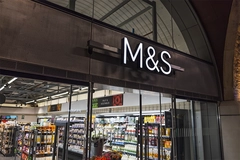
- Industry news
Industry news
- Category news
Category news
- Reports
- Key trends
- Multimedia
- Journal
- Events
- Suppliers
- Home
- Industry news
Industry news
- Category news
Category news
- Reports
- Key trends
- Multimedia
- Events
- Suppliers
Jungbunzlauer GdL Shows New Potential Amidst High Phosphate Prices

GdL stayed in the niches during a long time because its neutralizing value (NV) of 47 obliges bakers to use 50% more GdL than for example sodium acid pyrophosphate (SAPP) to get the same quantity of carbon dioxide released. Its cost at use was thus often considered as dissuasive when compared to common leavening phosphates.
28/01/09 Jungbunzlauer glucono-delta-lactone (GdL) has already been used for a while as a leavening acid in high quality baking mixes for home use, in refrigerated canned dough products and in deep frozen pizzas. However it stayed in those niches during a long time because its neutralizing value (NV) of 47 obliges bakers to use 50% more GdL than for example sodium acid pyrophosphate (SAPP) to get the same quantity of carbon dioxide released. Its cost at use was thus often considered as dissuasive when compared to common leavening phosphates.

The picture has totally changed with the considerable price increases observed in the phosphates market over the last 18 months. Even if the peak has now passed, phosphate prices remain very high. These changed economics now allow bakers to really make use of GdL’s numerous benefits:
Naturalness: we consider our GdL as natural because it is made from renewable carbohydrates, because it is made by a natural microbial fermentation and because its dissolved form, gluconic acid, occurs naturally in honey and noble wines.
Organic approval: in the USA, GdL belongs to the substances allowed as ingredients in processed products labelled as organic or made with specified organic ingredients. In Europe, GdL is not allowed in organic products yet, but we will support interested parties in getting the approval.
Versatility: as GdL’s dough rate of reaction (DRR) is slow to intermediate, it can replace both fast and slow phosphates.
Taste: with its typical mild taste, GdL allows baked goods to express their true natural flavour, while the typical soapy off-note caused by SAPP does not occur.
Appearance and texture: GdL creates a lighter crumb colour, a more homogeneous cell structure and suppresses the risk of black specks on the crust.
Shelf-life: an overdosage of GdL acidifies the baked good, slows down mould development and thus prolongs shelf-life in a natural way without negative effects on taste. This is not possible with phosphates as they buffer the pH of the baked good at approx. 7.
Sodium reduction: when replacing SAPP with GdL, a sodium reduction of 25-35% can be achieved while improving the product quality. GdL thus enables bakers to label their products with the nutrition claims “reduced sodium” or “light in sodium” under the EU Nutrition and Health Claims regulation.
Aluminium reduction: following a new toxicological evaluation of aluminium in 2006, JECFA and EFSA reduced the provisional tolerable weekly intake of aluminium from 7 mg/kg bw to 1 mg/kg bw. Bakers using sodium aluminium phosphate (SALP) for its benefits vs. SAPP will find in GdL a real alternative to reduce the aluminium content of their products while keeping their high quality.
The changed phosphate economics, but also the booming demand for organic and all natural baked goods, in relation with the use restrictions of phosphates in organic products and questions about the naturalness of phosphates finally put GdL under the spotlights. Also the need of individuals to reduce sodium and aluminium intake while keeping product quality speaks in favour of GdL.
Its unique combination of benefits now makes GdL more interesting than ever as a natural leavening acid, especially for muffins, cakes and pancakes in their organic, natural, sodium-reduced and aluminium-reduced forms.










